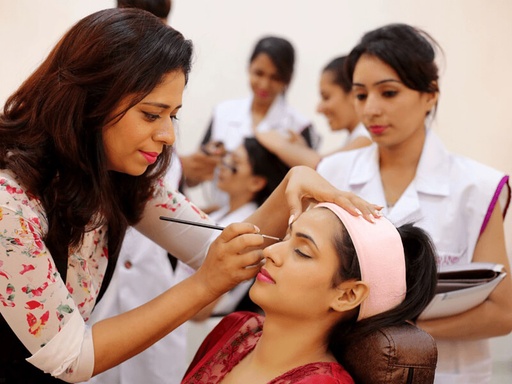Reach new heights
Start your online course today!
Skill up and have an impact! Your business career starts here.
Time to start a course.
Leaderboard
No leaderboard currently :(

MEDICAL REPRESENTATIVE COURSE
The Medical Representative Course is designed to equip individuals with the essential knowledge and skills required for a successful career in the pharmaceutical industry. The course focuses on understanding pharmaceutical products, mastering sales techniques, and developing effective communication strategies for engaging with healthcare professionals. Participants will learn how to present and promote medications, manage customer relationships, and stay updated with industry regulations. Additionally, the course covers topics such as medical terminology, ethical considerations, and product knowledge, ensuring that graduates are well-prepared to represent pharmaceutical companies and contribute to the growth and success of healthcare solutions.
Duration: 6 Months
Training with 100% Placement Assistance
Mode: Online , Offline (Hybrid) with Industrial Training
Fees: Rs. 25500/-
Eligibility: 12th + / Graduated
Expected Salary: Rs. 12000/- to 35000/-
Loan Facility Available
Advanced
Intermediate
100% Placement Assistant
0 steps

Nursing Assistant Course
Understanding Nursing Assistant Courses: A Pathway to Essential Healthcare Skills
The healthcare field is a vital component of our society, requiring a diverse array of skills, knowledge, and compassion. For many aspiring healthcare professionals, enrolling in a Nursing Assistant (NA) course is the first step toward a rewarding career in patient care. These programs provide training in basic nursing skills, principles of healthcare, and essential patient care techniques, typically lasting from several weeks to a year. This article will delve into the significance of Nursing Assistant courses, explore what they encompass, and provide practical examples and actionable tips for those interested in pursuing this career path.The Importance of Nursing Assistant Training.Nursing assistants play a crucial role in healthcare settings, working directly with patients to ensure their needs are met. Under the supervision of licensed nurses, NAs perform various tasks, including monitoring vital signs, assisting with daily living activities, and providing emotional support to patients and their families. This program is especially beneficial for those seeking a career in healthcare without committing to extensive education.
Duration: 6 & 8 Months
Fees : 12800/- & 18600/-*
Training with 100% Placement Assista*
Mode: Online, Offline & Industrial Training
Eligibility: 10th/12th Pass
Posting: Pan India
Salary: 8000/- to 16000/-
Lone Facility Available
*For Advanced Course
Advanced
Basic
100% Placement Assistant
0 steps

Banking & Insurance Course
A Banking and Insurance course provides a comprehensive understanding of the financial services industry, focusing on the fundamental concepts, operations, and regulations of both banking and insurance sectors, preparing students for various roles in the financial industry. Banking and insurance are vital sectors, and understanding their workings is crucial for effective communication. Whether you're writing a marketing brochure for a bank or crafting a policy document for an insurance company, clear and concise writing is paramount. This guide will break down the key elements of writing about banking and insurance in simple terms, providing practical examples and actionable tips.
Course Content:
Course Content:
These courses typically cover topics like banking operations, risk management, insurance principles, financial markets, investment strategies, and financial analysis.
Skills Development:
Students gain analytical, problem-solving, and decision-making skills, along with knowledge of the roles and responsibilities of banks and insurance companies.
Fees: Rs. 32000/
Duration: 6 Months
Training with 100% Placement Assistance
Mode: Online + Offline (Hybrid Mode)
Eligibility: 12th Pass / Stream Graduate
Expected Salary:
Rs.₹14000/- to ₹22000/-
Loan Facility Available
Basic
Intermediate
BATCH FULL
100% Placement Assistant
0 steps

Nutritionist Certificate Course
Our Nutritionist Certificate Course is a comprehensive 6-month online program designed to equip individuals with essential knowledge and skills in the field of nutrition science, food safety, and dietary counseling. This course is ideal for those aspiring to pursue careers in nutrition, wellness, or healthcare.
Course Highlights:
*Curriculum:*
The course offers an in-depth exploration of nutritional science principles, focusing on macronutrients and micronutrients, their metabolism, and their impact on health. Participants will engage with topics such as dietary assessment, meal planning, and the role of nutrition in managing various health conditions.
*Learning Outcomes:*
Upon successful completion of the program, participants will:
- Acquire specialized knowledge in the science of nutrition and healthy eating habits.
- Develop the skills to create effective diet plans tailored to individual needs.
- Gain the ability to provide sound dietary advice and support in managing health-related issues.
*Career Opportunities:*
- Nutritionist
- Dietitian
- Health Coach
- Food Technologist
Duration: 6 Months
Training with 100% Placement Assistance
Mode: Online with Industrial Training
Fees: Rs. 25500/-
Eligibility: 12th + / Graduated
Expected Salary: Rs. 12000/- to 25000/-
Loan Facility Available
Basic
Intermediate
100% Placement Assistant
0 steps

Beautician Certificate Courses
Beautician certificate courses are a great way to gain the foundational skills needed to work in the beauty industry. These courses typically cover a range of topics, including:
- Skincare: Basic facials, skin analysis, cleansing, toning, and moisturizing techniques.
- Haircare: Shampooing, conditioning, basic hairstyling (blow-drying, braiding, simple cuts), and sometimes introductory coloring and chemical treatments.
- Makeup: Basic makeup application for different skin tones and occasions.
- Nail care: Manicures and pedicures.
- Hygiene and safety: Maintaining a clean and safe work environment.
- Client consultation: Basic communication and understanding client needs.
Course Details:
- Duration: Certificate courses can vary in length, from a few weeks to a year. Some intensive programs might be shorter, while more comprehensive ones will be longer.
- Syllabus: The specific topics covered will depend on the course provider. However, the list above gives a general idea. Some courses might specialize in one area, like makeup artistry or nail technology.
- Fees: Costs can vary significantly depending on the institute, the duration of the course, and the level of training offered. Certificate courses can range from a few thousand to tens of thousands of Indian Rupees.
- Eligibility: Generally, the minimum eligibility is completion of the 10th or 12th standard. Some courses might have no specific educational requirements.
Fee : Rs 12800/-
Duration : 6 Months
Mode : Offline
Eligibility : 10 Pass
Lone Facility Avaible
Advanced
Basic
Intermediate
0 steps

Retail Chain Management Certificate Course
A retail chain management certificate course provides focused training on managing the entire supply chain within a retail organization, from product sourcing to customer delivery, optimizing operations and improving profitability. These courses often cover topics like inventory management, logistics, warehousing, transportation, and technology used in retail supply chains.
Key Aspects of Retail Chain Management Certificate Courses:
Supply Chain Fundamentals:
Understanding the flow of goods, information, and resources within a retail network, including sourcing, procurement, production, distribution, and sales.
Inventory Management:
Optimizing inventory levels to meet customer demand while minimizing storage costs and waste.
Logistics and Transportation:
Efficiently moving goods from suppliers to customers, considering factors like cost, speed, and reliability.
Warehousing and Distribution:
Managing storage and distribution centers to ensure timely and accurate fulfillment of orders.
Technology in Retail:
Learning about the use of technology, such as ERP systems, warehouse management systems, and transportation management systems, to optimize operations.
Supply Chain Analytics:
Using data and analytics to identify trends, predict demand, and improve decision-making in the supply chain.
Fees: Rs. 14800/-
Duration: 6 Months
Training with 100% Placement Assistance
Mode: Offline 100% Industrial Training
Eligibility: 10th Pass
Expected Salary: ₹8000/- to ₹16000/-
Lone Facility Available
Advanced
Basic
100% Placement Assistant
0 steps